Goodyear mountain bike tires: A comprehensive guide
Everything you need to know about Goodyear's knobby tires for singletrack shredding
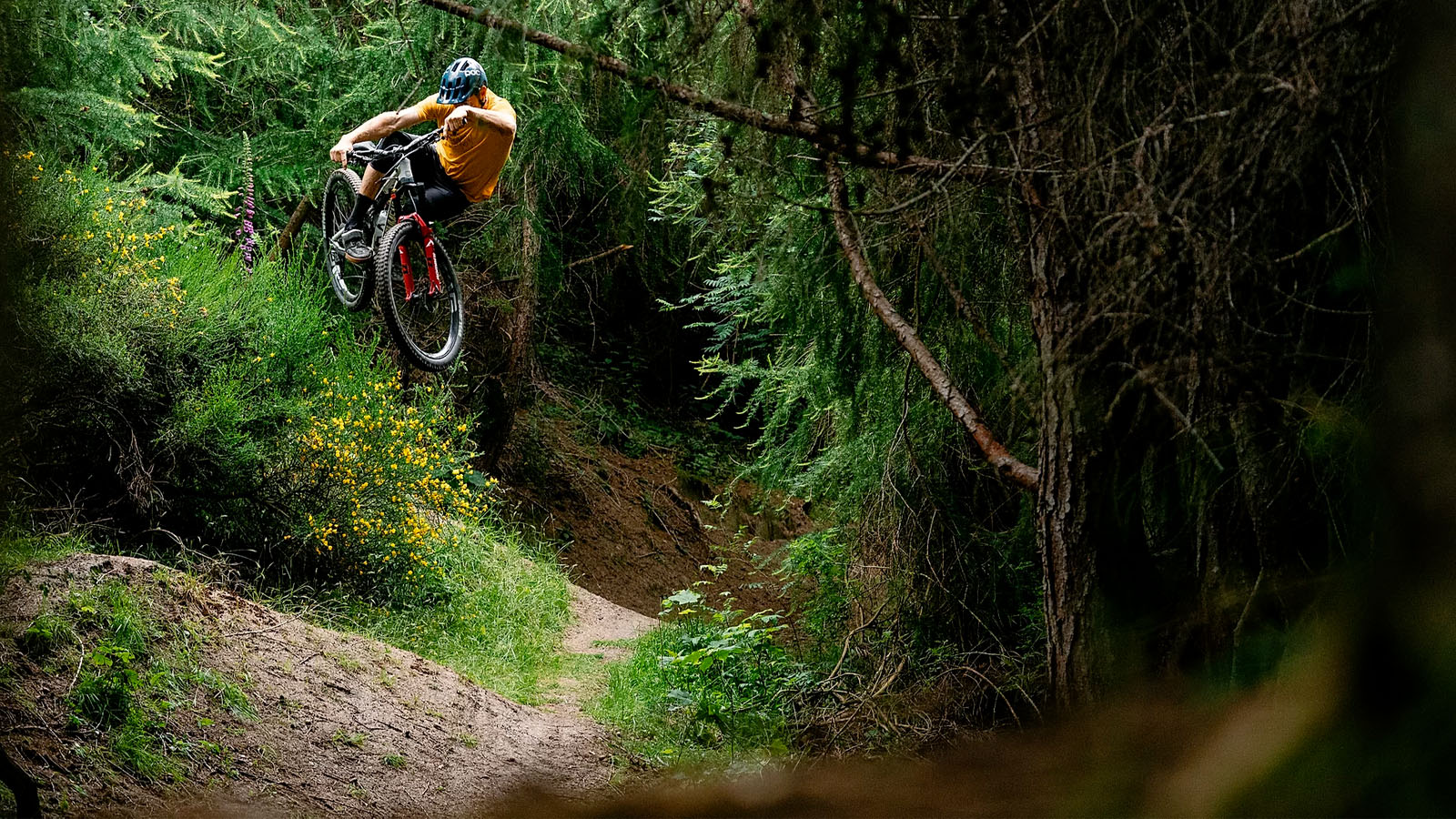
Goodyear is one of the most recognizable names in car tires. But, when the company was started in 1898, its bread and butter was actually in bicycle and carriage tires, in addition to rubber horseshoe pads and poker chips. The company was founded by Frank Seiberling, but named after Charles Goodyear, who patented a process for vulcanizing rubber in 1844, and died in 1860.
The brand stopped producing bicycle tires in 1976, but as of 2018, the brand has gone back its roots and launched a full line of tires for all disciples of cycling — including mountain bikes.
Read on to get the low down on Goodyear’s MTB rubber or jump to the bottom to learn more about the tires, compounds, and casing. Alternatively, if you're after a best-on-test comparison, check out our guides: The best mountain bike tires will provide best all-round performance, and the best MTB mud tyres is a rundown of the best rubber for when the rain pours.
Goodyear MTB tires you can buy today
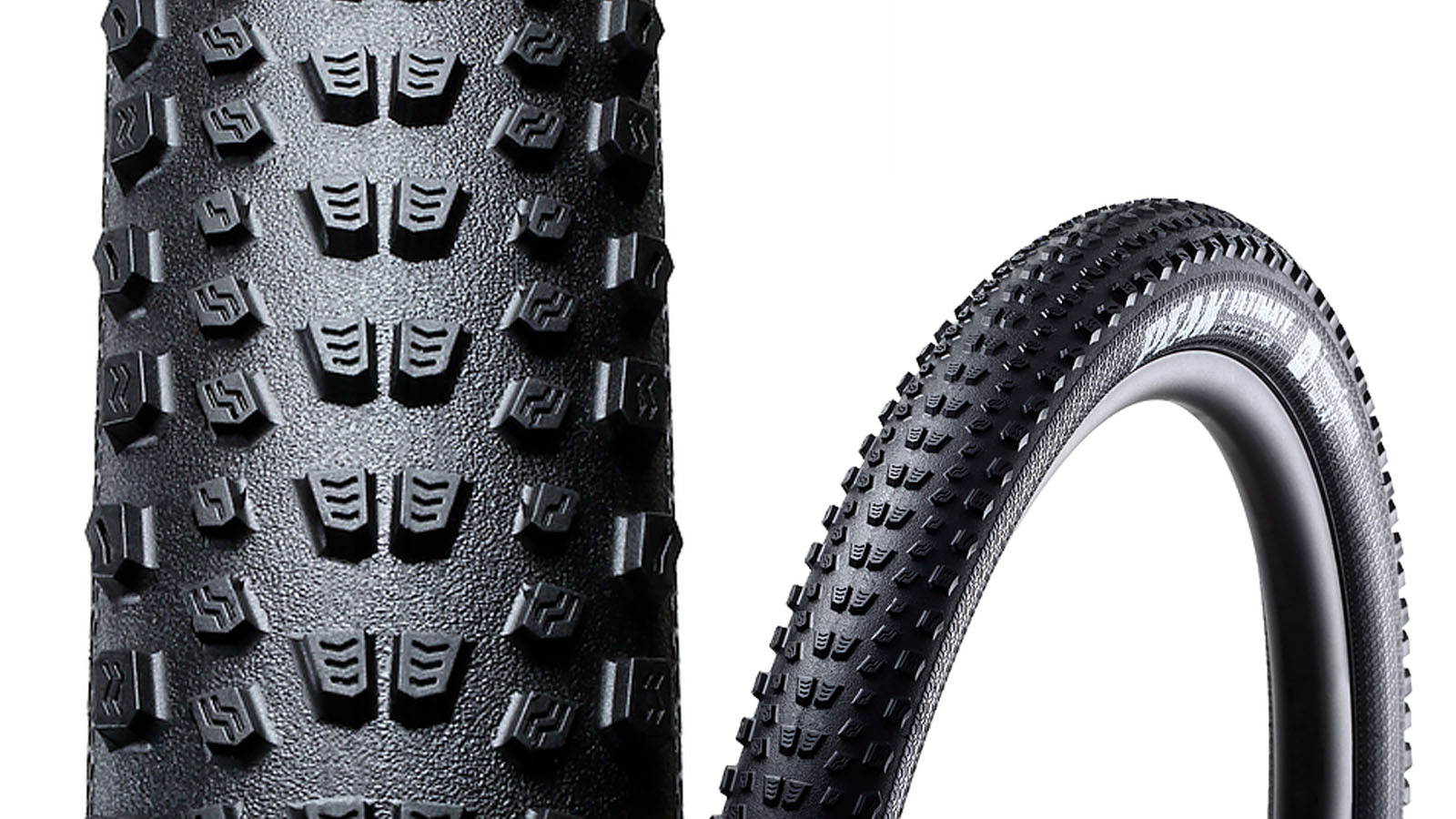
Goodyear Peak
Our expert review:
Specifications
Reasons to buy
The Peak is Goodyear’s speedy XC tire. With a round profile and closely spaced tread, reminiscent of a Maxxis Ikon, the centre nobs are ramped to minimize rolling resistance and blocked on the back to help you drop the anchors. Each block is directionally siped to help the knobs squirm and deform around terrain they are unable to dig into, like roots and rocks, to create purchase.
Only available in a pretty narrow 2.25 width, Goodyear is only making the Peak in its hardest Dynamic:A/T rubber compound and M:Wall protection, but the tire is available in the lightweight Premium and Ultimate casing.
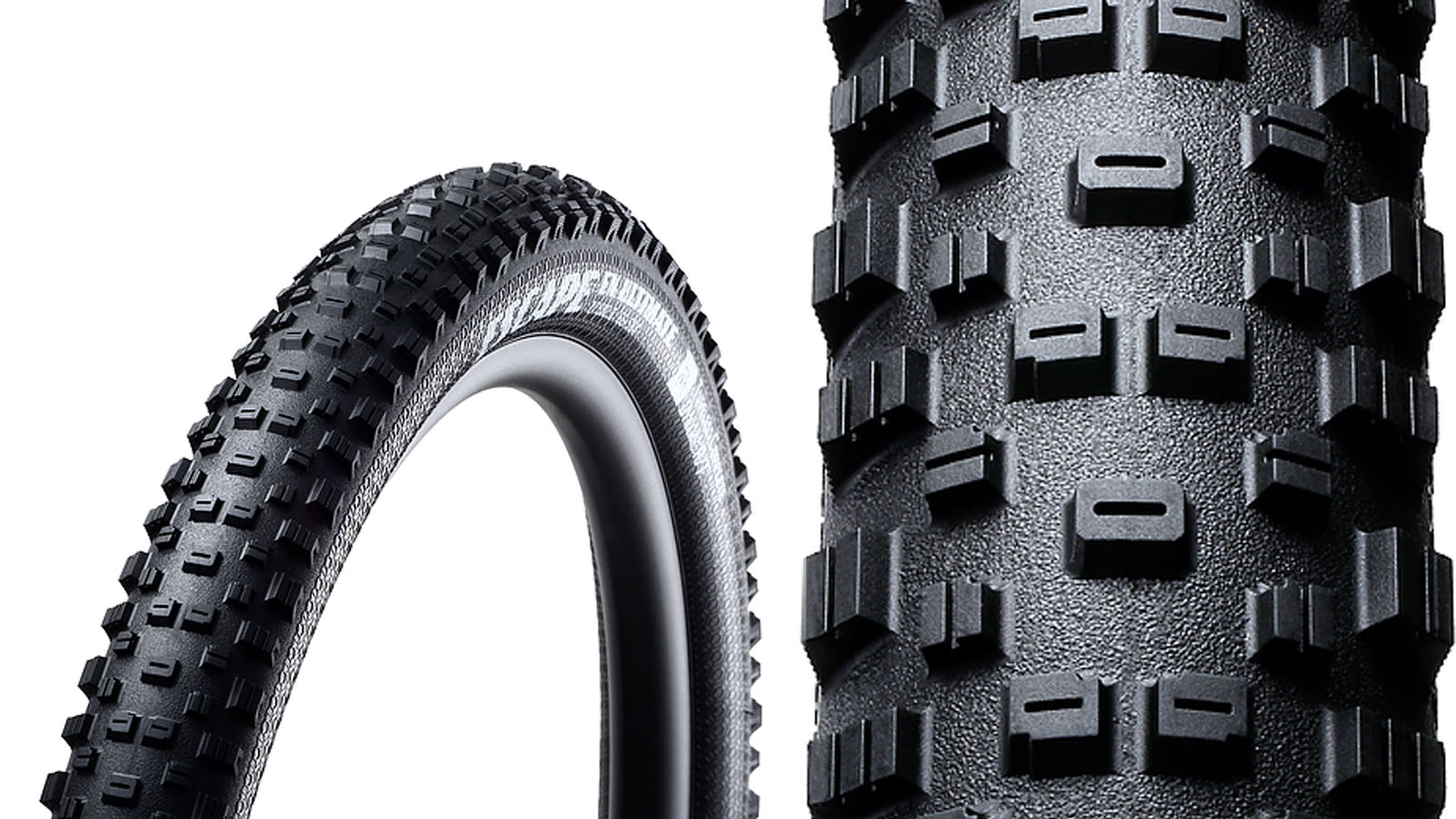
Goodyear Escape
Our expert review:
Specifications
Reasons to buy
Reasons to avoid
Slotting in as the brand's all-around trail tire, the Goodyear Escape sees a bit more real estate between its knobs, which are considerably more squared off and aggressive than the Peak. Each block is siped for edge to edge group, and the round profile makes for predictable traction throughout.
The Escape sees Goodyear's M:Wall sidewall protection to prevent tears and the brand's mid-range Dynamic:R/T compound; the 2.35in size comes in the Premium and Ultimate casing, while the wider 2.35in and 2.6in sizes swap to the EN versions, for improved puncture resistance but also a bit of extra support for the wider profile.
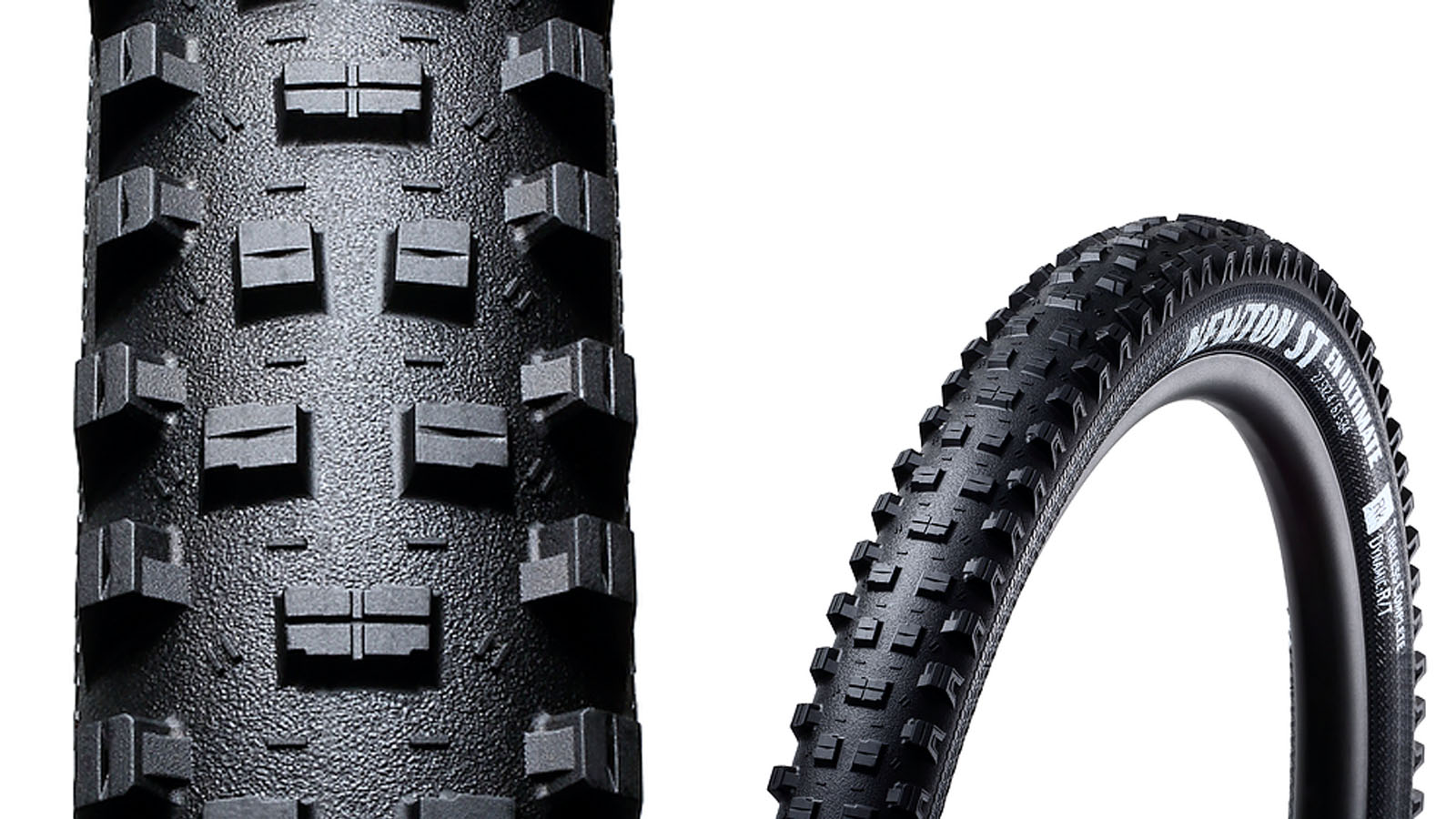
Goodyear Newton
Our expert review:
Specifications
Reasons to buy
Reasons to avoid
In homage to the man behind the theory of gravitation, Goodyear’s gravity enduro and DH tire are aptly named the Newton. Designed for traction at all costs, the Newton uses prominent well supported side knobs. The center strip is medium height to prevent the draggy, ‘I’m sure that my rotors are rubbing’ sensation on offer from some Enduro and DH rubber.
Available in 2.4in and 2.6in sizes, Goodyear makes the Newton two models. The first utilizes the brand's EN casing and the mid-durometer R/T compound or an ultra-robust version that pairs the brands burliest casing with its softest RS/T rubber for velcro-like traction. Best of all, every Newton tire is tubeless-ready and has a folding bead.

Goodyear Newton ST
Our expert review:
Specifications
Reasons to buy
Reasons to avoid
The Newton ST is a multi-condition tire designed for aggressive riding, with cornering bite that will rattle your fillings loose. The center strip sees ramped and siped center knobs, while the shoulder tread is arch supported; every knob is taller and meatier than the standard Newton for max purchase on steep and loose descents.
Goodyear is offering the Newton ST with the EN Premium and EN Ultimate casing with the RT rubber compound, while the DH version takes the brands soft and sticky RS/T rubber and mates it with their burliest DH Ultimate casing.
What you need to know
1. Compound
Why trust BikePerfect
Goodyear knows a thing or two about rubber, and they are one of the only bike tire brands that formulate its rubber compounds from scratch. With this process done in-house, they can tweek hardness, and add compounds like silica to improve grip and durability.
Dynamic:A/T – This is Goodyear's hardest durometer compound, which sees a focus on rolling resistance and durability.
Dynamic:R/T – Goodyear's mid-durometer rubber that's specially formulated to find a balance between grip, wear and efficiency.
Dynamic:RS/T – The soft and sticky DH compound, don't expect to break any speed records pedaling along the flats or uphill with a tire made of this rubber. But when it comes to high-speed corners, the RS/T compound will hang on for longer than the rest.
2. Casing
Goodyear offers its tires in four casings, running from paper thin and lightweight cross-country bike versions all the way up to nuclear bomb-proof downhill bike suitable builds.
Ultimate
This is Goodyear’s lightest casing fabric, which utilizes ultra-fine threads and less rubber. The result is a tire that is supple and fast-rolling, but less robust and resistant to cuts, tears, and punctures.
Premium
With a slight thicker gauge thread making up the casing fabric, the Premium carcass gains some durability at the cost of weight and supple flexibility. This level of the casing is ideal for everyday trail riding and should survive all but the spiciest of descents.
EN
When you look at the list of certain tires in Goodyear’s lineup, you will find some of the tires will be available in EN Premium and EN Ultimate casings. This takes the standard carcass and utilizes a 1.5ply construction, and increases the sidewall layers by 50-percent. Not only does this improve durability, but it also provides additional sidewall support in wider sizes.
Best mountain bike tyres 2020: all the top mountain bike tyres reviewed
Best mountain bike wheels 2020: the best MTB wheels reviewed
Best MTB flat pedals: the five best MTB flat pedals you can buy
DH
Some self-explanatory is the DH casing, which is designed to take an absolute beating before it lets go of air pressure. With a 2ply casing, the DH sees a butyl insert to reinforce the sidewall further and provide additional support.
3. Protection
Most of Goodyear’s MTB tires feature the M:Wall sidewall protection. Beyond the texture, M:Wall is a ‘mono fabric,’ which runs from bead to bead prodding cut and abrasion resistance.
The only tires that don’t have the M:Wall protection are those with the DH casing, and that’s because they have the burlier A:Wall sidewall protection. A:Wall is a butyl layer located within the casing piles that provides cut and tear resistance and sidewall support.
5. Tubeless Complete
Every Goodyear MTB tire is listed as tubeless complete. This is the brands tubeless technology, and while like every other brand it allows you to ditch the inner tube, what separates tubeless complete is the ease of setup.
Goodyear’s combination of a tubeless specific bead means they can be seated with a floor pump and have minimal air loss overnight.
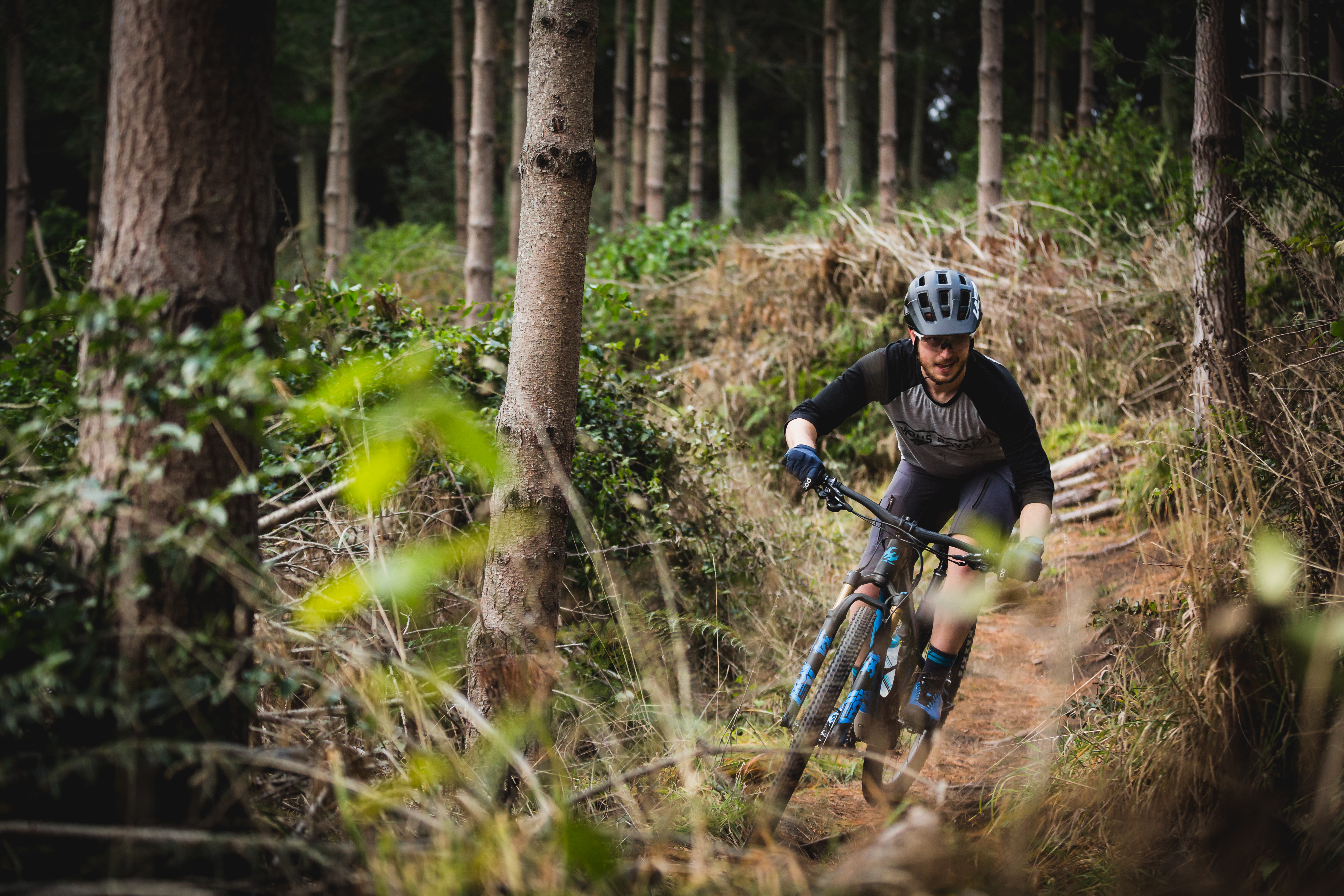
Born and bred in Colorado, and now based in Australia, Colin comes from a ski racing background and started riding as a way to stay fit through the summer months. His father, a former European pro, convinced him to join the Colorado State University collegiate cycling team, and he hasn't stopped since. It's not often he pins on a number nowadays, and you'll likely find him in search of flowy singletrack, gravel roads and hairpin corners. Colin has worked at Bikeradar and is a regular contributor to Australian Mountain Bike and Cyclist magazines.
Rides: BMC Team Machine SLR01, Trek Top Fuel 9, Ibis Ripley
